Nikon 24mm comparison {aperture priority}
I knuckled down to geek out to something I’ve been exploring for many moons, a lens comparison between Nikon 24mm Trinity which includes the legendary ultra-wide angle Nikon 14-24mm f/2.8 ($1760), the practical & smooth Nikon 24-70mm f/2.8 ($1650), and exotic Nikon 24mm f/1.4 ($1880). The Trinity shares three things in common:
- They are expensive Nikon glass. Anytime I spend over $1,000 on anything, I think long and hard.
- They focus fast and are razor sharp. One of Nikon’s greatest strengths compared is effective focusing in low-light. You could make 20 x 30″ prints no problem using any of these lenses.
- They photograph well at 24mm. Sure, wide-angle distortion is a common atrribute at 24mm… but nothing that can’t be fixed in post-processing (if that is your thing).
What I have been curious about is how well they shoot at 24mm at their widest aperture. If you are interested in Nikon sharpness, I recommend Ken Rockwell’s 24mm sharpness comparison.
Background:
This study requires an appreciation of seeing the difference between f/2.8 and f/1.4, especially since the most expensive lens in Nikon 24mm Trinity doesn’t zoom and shoots exclusively at a very-wide f/1.4 aperture. If you’ve glanced at camera advertisements in photography magazines, you can spot a huge price differences in f/2.8 zoom lenses like a 24-70 and a fixed focal lens with a wider aperture like a 24mm f/1.4. Understanding abilities of these specialized lenses is important for three reasons:
- Know the right tool for the job. If given the choice, grabbing the ‘right’ lens in your creative quiver takes experience. If I am heading into the backcountry, I take my ultra wide. If I am in a low-light scenario, then the 24mm 1.4 is the winner. For studio work and weddings, the 24-70 stands incredibly versatile.
- Use wide-angle lenses properly. Too many photographers misused wide angle lenses. They are supposed to move closer to the subject, which takes risk.
- Don’t buying something just because it is expensive. When it comes to expensive things like skis, bikes, wine, watches, or cars: More $$$$ doesn’t mean better.
Over the years camping out in airports reading camera photography reviews (read: camera porn), I learned a lot about good optics vs cheap marketing. I’ve been wanting to compare three Nikon lenses, side by side, shot at 24mm and see what works, and what doesn’t. Hover your mouse over to see the difference (If you are reading in RSS, hit HERE to view):
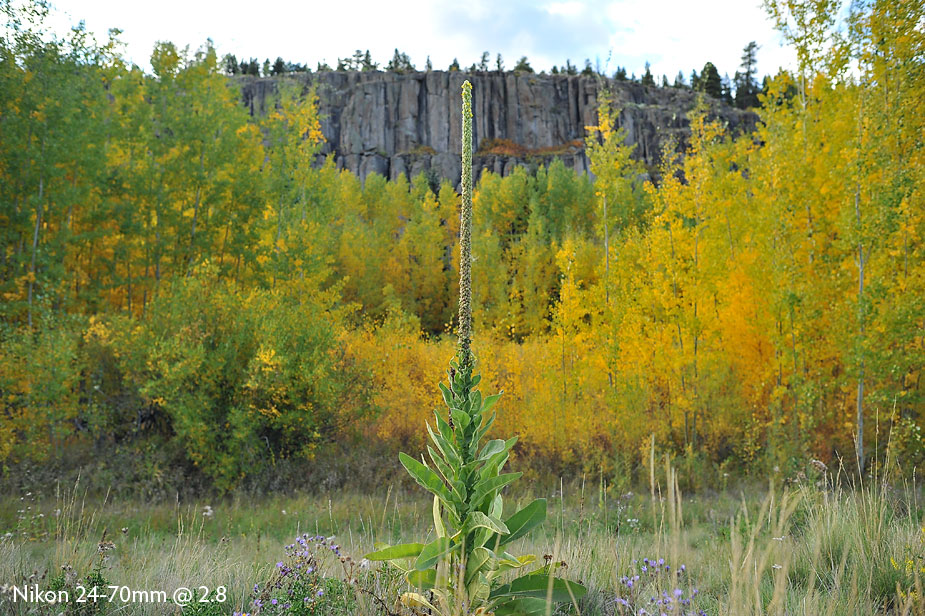
A static image for scale comparison (I stand 5’9.75″)
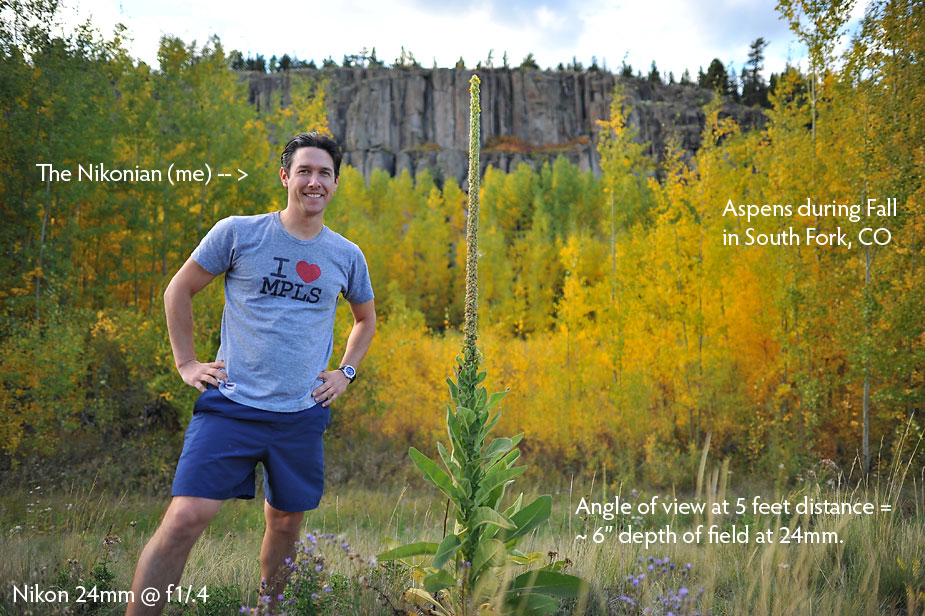
What works:
If seen a 3D movie, you already know the difference between 1.4 and 2.8 when it comes to 24mm angle lenses. There’s an added dimension, but you have a pay a bit extra to see it. And it may not please everyone, similarly how 3D goggles don’t fit everyone the same.
Shooting at 24mm is a wide angle perspective… consider it panorama vision when it comes to the human eye. The lens actually SEES more than the human eye at that field of view using typical full-frame 35mm sensor.
There’s an intrinsic quality, a depth when it comes with not only getting close with your subject, but close and personal. Photographers use of the phrase “shallow depth of field” to describe the narrow plane of focus which causes certain background and/or foreground elements of the photo to be out of focus. And there’s art and skill in learning how to use these lenses, which takes practice.
Here’s the Nikon 24mm f/1.4 shot at f/1.4 vs f/2.8. Mouse over to view the difference in depth of field and vignette:
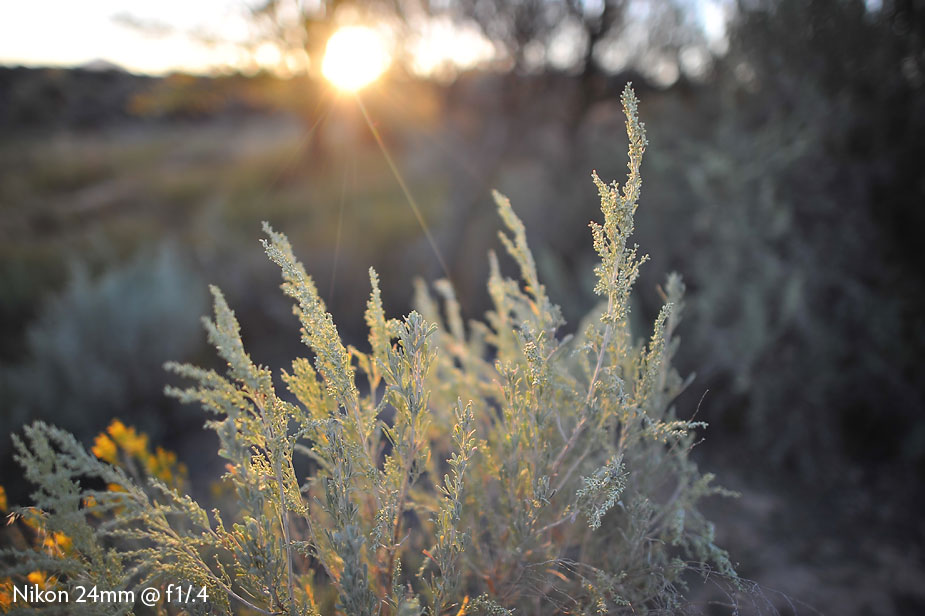
A comparison of the Nikon 14-24mm f/2.8 vs. the Nikon 24-70mm f/2.8, both shot at f/2.8 (close similarity, slight distortion).
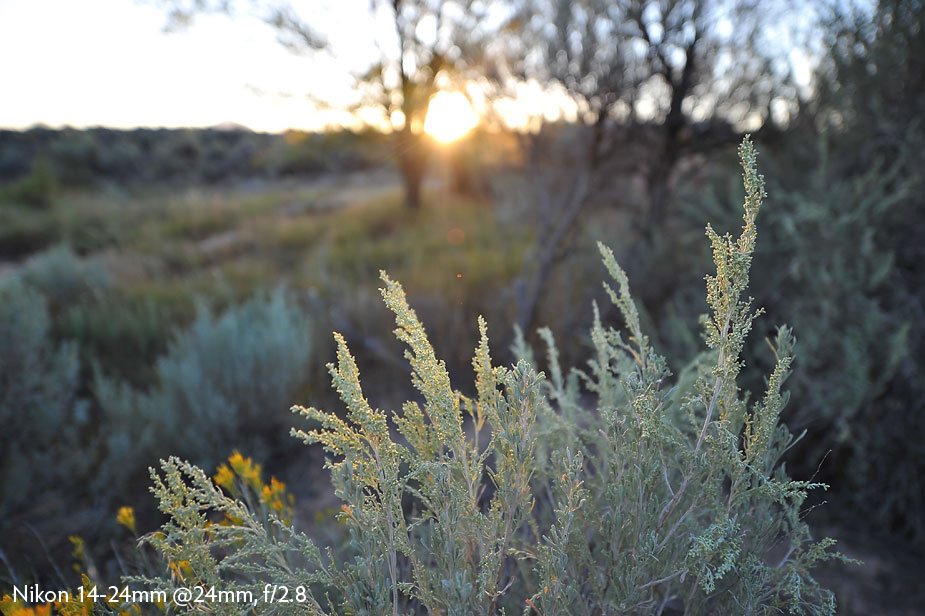
A few steps closer to the subject, about 18″ away (pincushion distortion):
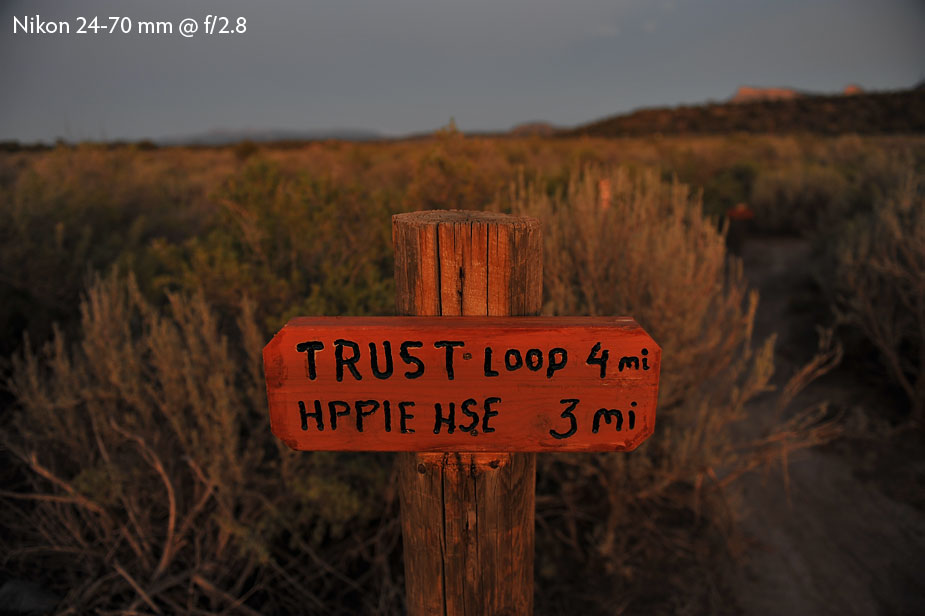
The Skinny:
Shooting 24mm at 1.4 or 2.8 has it’s merits. It’s a dance between a macro lens and wide angle, hard to accomplish yet worth weight in gold…. like landing a first kiss on a date. Shooting at f/1.4 in the 24mm range requires a certain skill. Add the needed trust needed to get your clients closer.
Pros:
- I took my 24 f1.4 to Burning Man. I left my 14-24 at home. Why? I want lens protection from the elements and the 14-24 is just too much exposed to sand, water, and dirty hippies.
- Shooting from the hip has a whole new meaning at 14mm. You’ll know wy when standing inches from a flower girl bubbling with joy who has no idea you are about to create a photo that will make her grandmother MELT. THAT is what wedding photography is about.
- Forget flash & tripod when you can hand-hold at 1/15, ISO 3200, at 1.4. That’s low-light shooting at it’s best… almost near infrared spectrum.
Cons:
- 16mm is where my world starts. I wish I could take it all in. I simply CAN’T at 24mm. Period.
- A zoom is faster than my legs can walk in dire situations: think cake-cutting, wagging dog, or over-the-head politician fist pumping… all distinct genres with similar challenges.
- There’s no way I can justify owning, let along carrying, all three. At least one has to go. I boot the 24-70mm f/2.8.
Conclusion:
You don’t buy a 24mm f/1.4 for sharpness at shooting at f/1.4. The Nikon 24mm is an exception. It is very, very sharp shot wide open. Then again, you don’t buy a 24mm f1.4 for shoot at f/11 all day, many cheaper lenses will do get this job done for $1500 less.
Modern zooms are just as sharp at 2.8. That’s not the point. That’s like asking for a $5,000 wedding dress for $500. It just doesn’t happen. While the extra 2 stops of light is nice, the shallow depth of field makes this lens shines. But to see the bokeh best, you have to be close to your subject… like within 2 feet.
If I had to choose one lens, I’d go for the Nikon 14-24 which is the best wide angle zoom lens I’ve ever used.
If I was to choose one of the three: The Nikon 24mm f/1.4 is my winner.






Pingback: The Hit List: 33 Photo Tips & Tutorials from 2011 | Kern-Photo